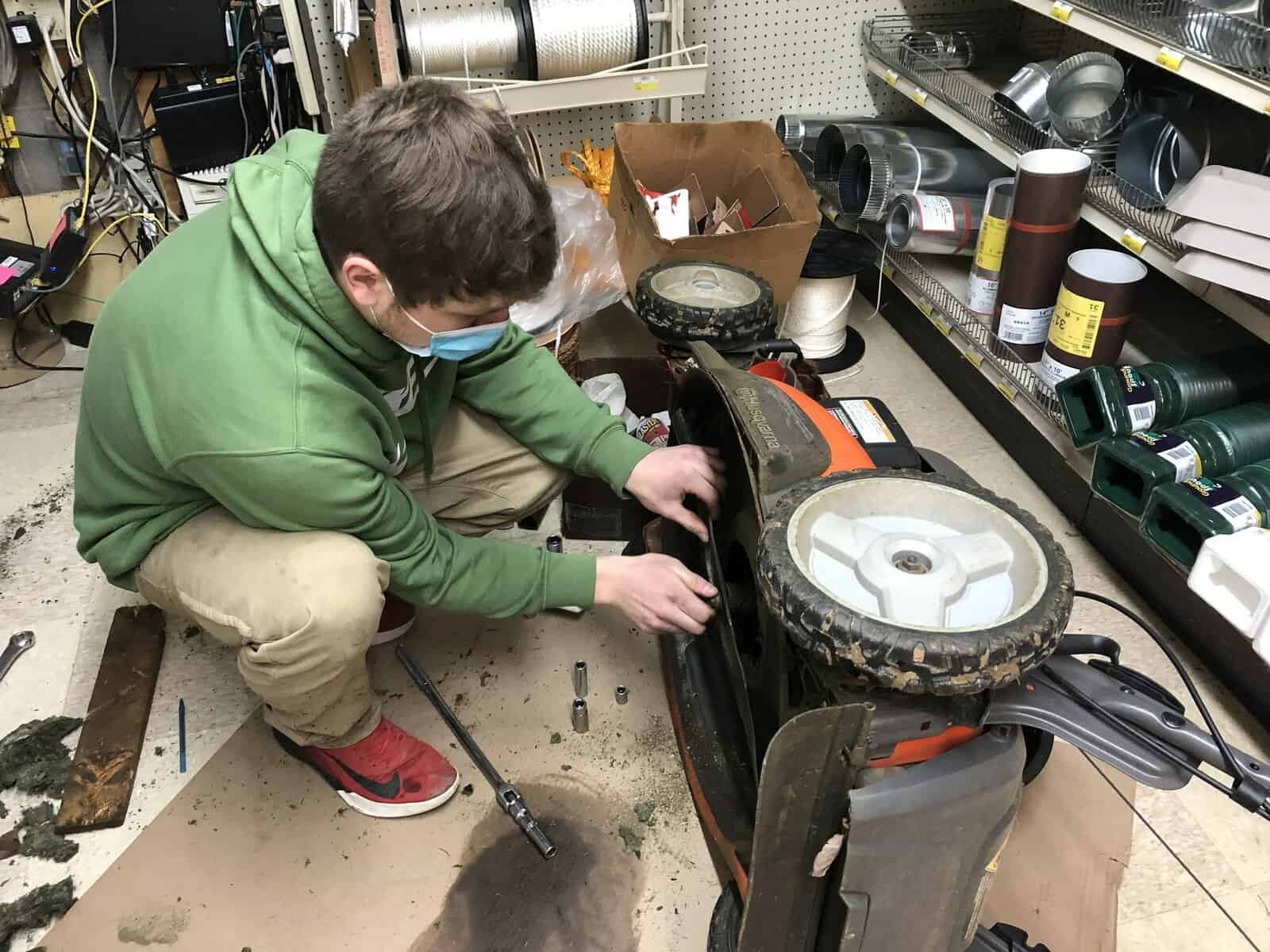Hi,
One annoying problem with a mower is when a lawn mower blade won’t turn. There are many reasons why this could occur, from electrical issues to damaged or confiscated parts.
Fortunately, there are always ways to diagnose and fix lawn mower problems. But they depend on the underlying causes.
Today’s topic will explore common reasons for this problem. Plus, we’ll provide tips on how to fix each to get your lawn mower working again.
Thus, let’s scroll down to learn more!
Contents
Why Lawn Mower Blade Won’t Turn

We discovered the five most common causes of this problem during our research. And we will share it with you right in this section!
Belt Issues
The belt is a mower’s essential component that connects the motor to the blade. Specifically, the belt can cause problems if it is not working correctly, including preventing it from spinning.
Thus, checking the belt path can help determine if the belt is jammed, twisted, or stuck under the pulley. These problems can cause electric lawn mower blades not spinning.
Besides, worn or damaged belts can be the cause. When checking belts, look for any visible signs of damage, such as cracks or fraying.
Blade Issues

The second reason lawn mower blade stiffs is that it is clogged. Over time, it can become severely bent or damaged, preventing it from turning. Hence, this problem is easy to detect and can be caused by hitting rocks or tree roots.
Also, a blade hitting the deck wall can cause this problem. It can be from improper installation or a damaged deck.
Engine Issues
Check the engine if you see fumes or other strange phenomena during mowing. A malfunctioning motor can cause a lawn mower blade not spinning freely by various mechanical problems.
An engine problem that can cause blades to stop spinning is a clogged air filter. Specifically, a dirty air filter can restrict the airflow into the engine. Hence, your lawn mower lacks power and prevents the blades from turning.
Besides, the cause may come from poor spark plugs. Damaged or worn spark plugs can prevent the engine from starting or running correctly, resulting in the blade not turning.
Electrical Problems

Many modern mowers feature an electric start. Accordingly, it requires an active battery and electrical system to function. Yet, if the battery or electrical components are not working, the blade may not rotate.
First, your lawn mower may have run out of battery. If the battery is not charged, the electric starter will not work, causing the blade not to work. Thus, check the battery regularly to ensure the correct operation of the circuit breaker.
Also, faulty wiring or damaged electrical components can cause the blade to stop rotating. They can come from:
- Switch
- Solenoid coil
- Fuse
Besides, many mowers have safety switches. This part prevents the engine from starting or your blade from rotating if the operator is not seated correctly.
Hence, a malfunctioning safety switch can cause your machine not to work, and it is essential to replace it immediately.
Seized Bearing
The bearing is an essential component that supports the blade and allows it to rotate freely. Over time, it can become dirty or damaged, causing a jam.
Besides, stuck bearings can happen due to a lack of maintenance. Failure to lubricate or clean this part regularly will cause this problem. Also, exposure to water or moisture can cause bearings to rust and become stuck.
How To Repair A Mower Blade That Won’t Turn?

After finding the cause of this problem, you must get a suitable solution. Fortunately, we have the most relevant tips for the reasons above. Let’s find out!
Check The Belts.
There are a few steps to fix if you suspect that the belt is causing the problem:
- Disconnect spark plugs: Always disconnect spark plugs before starting any repair work on your lawn mower. This note is to prevent the engine from an accident.
- Check the belt: Then, locate the belt and check for any visible damage. You may find cracks or lacerations. If the belt is worn or damaged, replace it with a new one.
- Check the belt tension: Ensure you tighten the belt properly (not loose or slack). Adjust by tightening or loosening the adjusting pin or spring if necessary.
- Check belt alignment: Ensure you align the belt correctly and it is not twisted or caught on the pulley.
- Check the mower: Reconnect the spark plug and check your machine.
Fix The Blade.

After you have checked the belts, but your machine is still not running, you can continue to check the blade. For this action, you also disconnect the power source in the same way as above.
Then you can check if the blade has any damage. We recommend that you buy a new one if it breaks. Yet, choose the new one with the right size for your mower. If your cutters are too blunt, use grits to sharpen them.
Finally, ensure you install the blade right and that the clearance between it and the mower floor is correct. Then, adjust if needed.
Check The Engine And Electrical System.
In this way, you have to check:
- Battery location
- Electrical wiring
- Switch
- Security system
First, ensure all the wires are connected and not loose or corroded. Then use a multimeter to check the battery voltage and ensure it is in the best condition.
If any component fails the test, replace it with a new one of the right design for your lawn mower.
Yet, if your lawn mower is too old to be repaired, consider buying a new one. In this case, consider 2-blade vs. 4-blade before purchasing.
Check The Bearings.
First, locate the bearings on the mower floor, the blade spindle, and the wheel. Then check them for visible damage (rust, wear, or leaks).
If the bearings have issues, use the bearing puller to remove them from the mower. Then, clean and inspect the area around this part and remove any debris. We recommend using a bearing press to install new bearings.
Conclusion
A lawn mower blade won’t turn can be annoying and prevent you from achieving a manicured lawn. Thus, following the tips and steps outlined in this topic can diagnose and repair the problem.
Your lawn mower can continue to be a reliable tool for keeping your yard in good condition with proper care.
For more guides on fixing your mower, visit Mowerliving.com!





